Di(pyridin-2-yl)methanone

Di(pyridin-2-yl)methanone structure
|
Common Name | Di(pyridin-2-yl)methanone | ||
|---|---|---|---|---|
| CAS Number | 19437-26-4 | Molecular Weight | 184.19 | |
| Density | 1.2±0.1 g/cm3 | Boiling Point | 343.5±17.0 °C at 760 mmHg | |
| Molecular Formula | C11H8N2O | Melting Point | 52-55 °C(lit.) | |
| MSDS | Chinese USA | Flash Point | 165.7±27.4 °C | |
| Symbol |

GHS07 |
Signal Word | Warning | |
Use of Di(pyridin-2-yl)methanoneDi(pyridin-2-yl)methanone is a biochemical reagent that can be used as a biological material or organic compound for life science related research. |
| Name | dipyridin-2-ylmethanone |
|---|---|
| Synonym | More Synonyms |
| Description | Di(pyridin-2-yl)methanone is a biochemical reagent that can be used as a biological material or organic compound for life science related research. |
|---|---|
| Related Catalog | |
| In Vitro | di-2-Pyridyl ketone 已用于制备具有“星形”拓扑结构的异常 {Ni(II)(3)Ln(III)(?-OR)(6)}(3+) 配合物。其单阴离子形式已用于合成三角形 Ni(2)M(M = 镧系元素,Y)配合物。源自二-2-吡啶基酮的席夫碱配体在 SK-N-MC 神经上皮瘤(癌症)细胞中表现出蚂蚁增殖活性。 |
| Density | 1.2±0.1 g/cm3 |
|---|---|
| Boiling Point | 343.5±17.0 °C at 760 mmHg |
| Melting Point | 52-55 °C(lit.) |
| Molecular Formula | C11H8N2O |
| Molecular Weight | 184.19 |
| Flash Point | 165.7±27.4 °C |
| Exact Mass | 184.063660 |
| PSA | 42.85000 |
| LogP | 0.58 |
| Vapour Pressure | 0.0±0.8 mmHg at 25°C |
| Index of Refraction | 1.594 |
| Symbol |

GHS07 |
|---|---|
| Signal Word | Warning |
| Hazard Statements | H315-H319-H335 |
| Precautionary Statements | P261-P305 + P351 + P338 |
| Personal Protective Equipment | dust mask type N95 (US);Eyeshields;Gloves |
| Hazard Codes | Xi: Irritant; |
| Risk Phrases | R36/37/38 |
| Safety Phrases | S26-S36 |
| RIDADR | NONH for all modes of transport |
| WGK Germany | 3 |
| HS Code | 2933399090 |
| Precursor 10 | |
|---|---|
| DownStream 8 | |
| HS Code | 2933399090 |
|---|---|
| Summary | 2933399090. other compounds containing an unfused pyridine ring (whether or not hydrogenated) in the structure. VAT:17.0%. Tax rebate rate:13.0%. . MFN tariff:6.5%. General tariff:20.0% |
|
Nickel/lanthanide single-molecule magnets: {Ni(3)Ln} "stars" with a ligand derived from the metal-promoted reduction of di-2-pyridyl ketone under solvothermal conditions.
Inorg. Chem. 49(21) , 9737-9, (2010) Unusual {Ni(II)(3)Ln(III)(μ-OR)(6)}(3+) complexes with a "star" topology have been prepared with ligands derived from the metal-promoted reduction of di-2-pyridyl ketone under solvothermal conditions;... |
|
|
Heterocyclic dithiocarbazate iron chelators: Fe coordination chemistry and biological activity.
Dalton Trans. 41(21) , 6536-48, (2012) The iron coordination and biological chemistry of a series of heterocyclic dithiocarbazate Schiff base ligands is reported with regard to their activity as Fe chelators for the treatment of Fe overloa... |
|
|
Initial employment of di-2-pyridyl ketone as a route to nickel(II)/lanthanide(III) clusters: triangular Ni(2)Ln complexes.
Dalton Trans. 39(37) , 8603-5, (2010) Using monoanionic forms of di-2-pyridyl ketone as the only primary ligand, triangular Ni(2)M (M = lanthanide, Y) complexes with interesting magnetic properties have been synthesized. |
| di(pyridin-2-yl)methanone |
| MFCD00006288 |
| pyridyl monoketone |
| Di-2-pyridinylmethanone |
| DI-2-PYRIDYL KETONE |
| Methanone, di-2-pyridinyl- |
| 2,2'-Carbonyldipyridine |
| Dipyridin-2-ylmethanone |
| di(2-pyridyl)ketone |
| 2,2'-Dipyridyl ketone |
| bis(2-pyridyl)ketone |
| EINECS 243-067-3 |
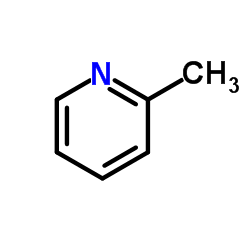 CAS#:109-06-8
CAS#:109-06-8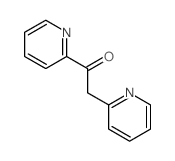 CAS#:59576-32-8
CAS#:59576-32-8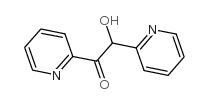 CAS#:1141-06-6
CAS#:1141-06-6 CAS#:17624-36-1
CAS#:17624-36-1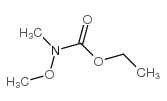 CAS#:6919-62-6
CAS#:6919-62-6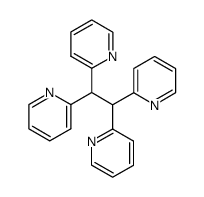 CAS#:97427-45-7
CAS#:97427-45-7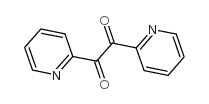 CAS#:492-73-9
CAS#:492-73-9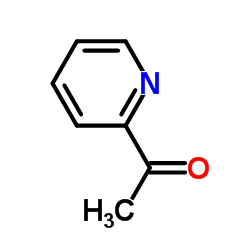 CAS#:1122-62-9
CAS#:1122-62-9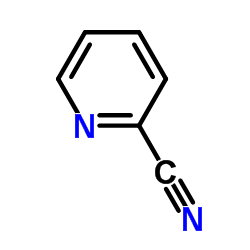 CAS#:100-70-9
CAS#:100-70-9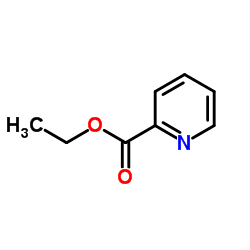 CAS#:2524-52-9
CAS#:2524-52-9![3-pyridin-2-yltriazolo[1,5-a]pyridine structure](https://image.chemsrc.com/caspic/254/947-88-6.png) CAS#:947-88-6
CAS#:947-88-6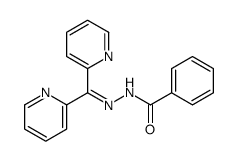 CAS#:101342-95-4
CAS#:101342-95-4 CAS#:2459-07-6
CAS#:2459-07-6 CAS#:1132-37-2
CAS#:1132-37-2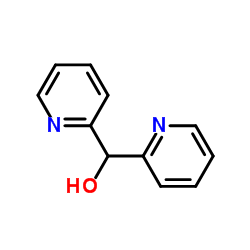 CAS#:35047-29-1
CAS#:35047-29-1 CAS#:1562-95-4
CAS#:1562-95-4 CAS#:741250-20-4
CAS#:741250-20-4 CAS#:67629-66-7
CAS#:67629-66-7
